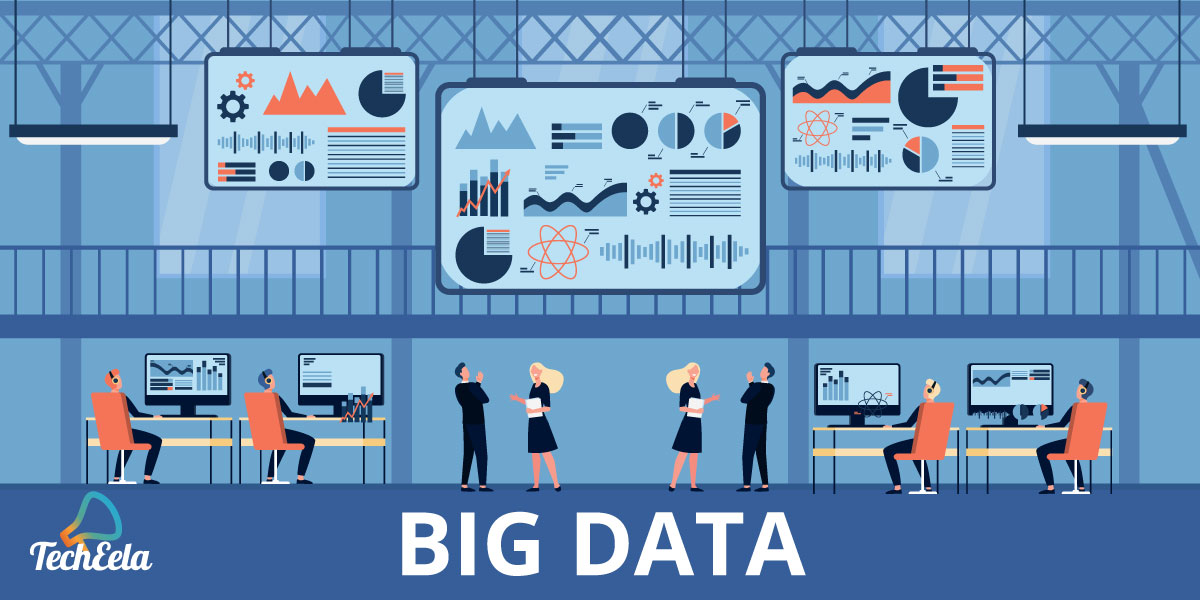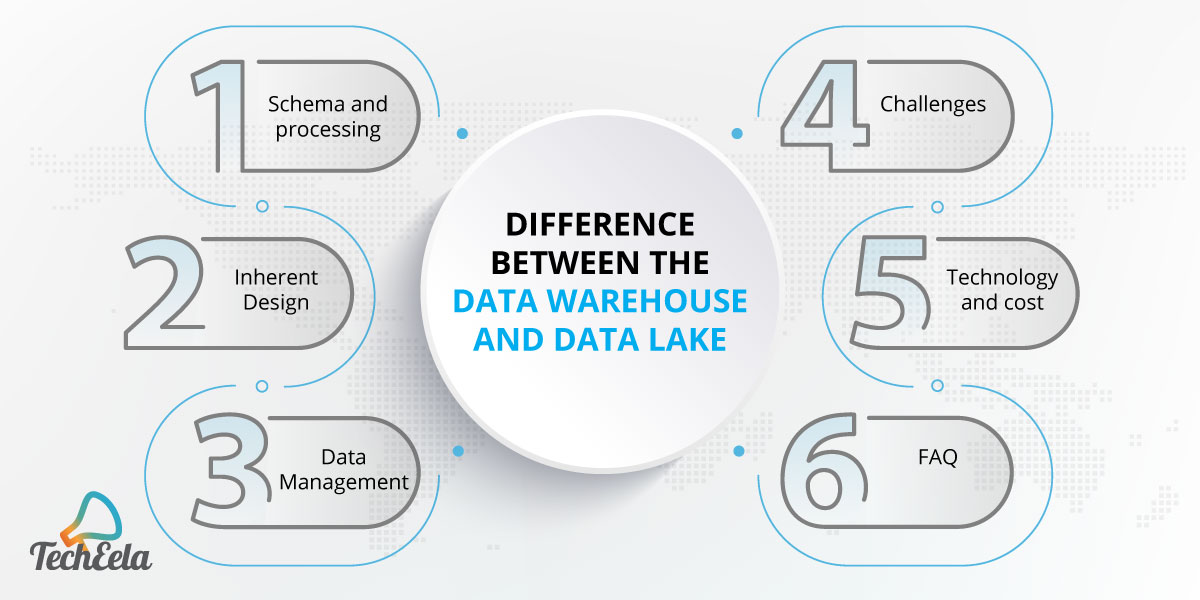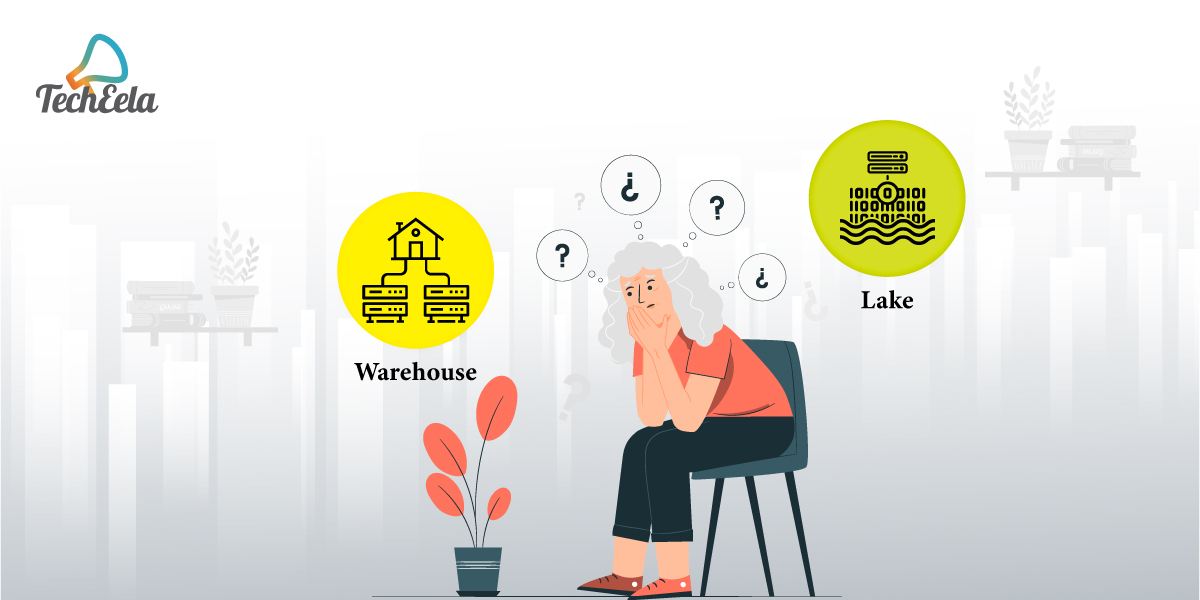
More on Technology
Innominds and Qualcomm Collaborate to Drive Enterprise Digital Transformation with High-Compute Edge AI Platform
-
Team Eela
Big Data is gaining a good popularity with time. When we discuss about big data and its solutions, you eventually land up discussing about data lake and data warehouse. Understanding the approach of these two big data solutions is essential before you plan for any implementation.
Let’s understand things from basics, how do the term Big data coined and why it matters? At the beginning of the internet, data quantity was not a big concern. But as time passed, technology got improved exponentially and at the same time, got easily accessible. As a result, many people started online surfing, browsing and watching content over it. After the huge success of smartphones, almost everything was available online, be it videos, movies, shopping, maps, etc.

This huge shift in the market also changed the marketing strategies and how the companies will work on continuous improvisation to stay competitive. The shift was towards the data-driven tactics and this new IoT world has a lot of data to offer, that’s how the term big data was introduced. In order to get best out of your big data, strategies were evolved (Known as Data strategy).
Data strategies provide the roadmap to deal and get results from your data. In this blog we will discuss one of the most important questions in the implementation of a data strategy, what you should choose, data warehouse vs data lake or maybe both?? Let’s understand them.
Data Lakes are quite like its name is. It is a big data storage that consists of a huge amount of unrefined data in its natural or raw form, structured, semi-structured, and unstructured. It offers fast data integration from various input sources with almost no alteration in the data. Big data lake is ideal for storing vast data at high speed from multiple sources and storing them in a raw or natural format.
A Data warehouse can be easily related to a typical warehouse that you are familiar with. It is a warehouse where historical objects (here data) are stored with a plan for using them later.
It is a central repository of long historical data from multiple sources that is to be analysed to get insights and answers to important business questions and improvisation.
In big Data warehousing, we only deal with structured data, where data stored has its predefined task to be fulfilled, which implies that no unnecessary data is occupying the storage. These are the two different approaches to deal with the big data.
So let’s understand the difference between data lake and data warehouse.
Difference between the data Lake and data warehouse can be understood with the simple analogy of lakes and household water tank. A data lake acts like a lake where data is coming from various data sources in any form (structured or unstructured). Data lake stores the data in its natural raw form, unaltered or almost unaltered state. Whereas in the data warehouse only obtains the data with specific standards and format, like the household tank where water received should be clean enough for the household usages.

Let’s discuss data lake vs warehouse in more details.
The key difference between the two is in the way they ingest the provided data. Data warehouse works on the ETL (Extract, Transform and Load) process compared to ELT (Extract, Load and Transform) process followed by the data lakes.
In Data Lake, the Data is uploaded directly without any demand of pre-processing and standardizing the data. Schema on Data is provided after the data ingestion, on-demand by software and tools, this is known as schema-on-read.
We are discussing about the schema followed by the Data warehouse. This is known as schema-on-write means, the data will be processed as per the given schema before it is stored in the warehouse. Data is only allowed to enter if it is needed and is discarded otherwise.
Different types of data warehouse primarily handles the structured data sets like relational databases, operational and transactional databases. Due to being highly structured the data quality never compromised, as a result operational reporting and query results are fast.
To describe in short, data warehouses work on the philosophy of “Think first and load later” and Data lakes works on the philosophy of “Load first and think later”.
Data warehouses are designed to support Business intelligence, performing queries and to get analytics from historical data. As the warehouse’s data is highly structured, even long historical data can be used easily to analyse the trends. But being highly structured and specific data warehouses are also rigid or less agile to any changes and updates, as compared to the lakes.
Data lakes are designed to overcome the shortcomings of the warehouses, Lakes are highly flexible and requires no pre-processing of data. Data lakes have the added advantage of data movement (To use the storage for high-speed data sources) and high-volume storage at a very competitive price point. Data lakes being highly unstructured, are primarily focused on supporting advanced data lake analytics and machine learning models without shifting the data to any other platform.
Data warehouses offer excellent data management, as the data ingested is highly structured and has predefined objectives to perform. The schema on the data is defined upon the entry of the data, this schema defines how the multiple sets of data is interrelated to each other and how it will be used in query and analytical processing. Most commonly used schemas are star schema, snowflake schema, etc.
Data Lakes offers very basic or almost negligible data management, Due to which data lakes faces some serious challenges. Schema on data is defined later by the user, which means the data available is mostly raw. But to keep track of the categories and type of data, Meta data is also stored along with the data. This availability of raw data also adds a big advantage of performing advanced analytics
Challenges faced with the Data Warehouses are that they are not scalable for collecting the data from various data sources as the pre-processing will make the ingestion process slow. This also makes then not suitable for real time data storage and analysis; this is where the Data lake shines. Data Lakes provide a solution for the whole problem just by shifting the processing of data after it is loaded.
Data lakes are also not any exception to face challenges, the biggest challenge faced by the lakes is that they gets converted into a data swamp. This issue arises when data becomes stagnant and unusable, resulting in poor quality data, lack of meta data management, and data governance. Data Swamps cannot be used even by using best analytical tools in the market, it’s for that reason they are also referred as Data Graveyards.
Data lakes are comparatively new to the market, and it is still growing its potentials. Hence Big data technologies used in data lakes are relatively new as compared to the data warehouse, which is being used for decades. Data storing in big data technologies for data lakes is relatively inexpensive than storing data in a data warehouse, which is costlier and time-consuming.
Setting up a data warehouse takes a considerable amount of time to analyse the data sources and profile the data. We have a highly structured data model for analytics and reporting. One of the important reasons for this is to save the space and simplifying the data model by specifying what to be taken and what to rejected.
Data warehouse are costlier because of the types of data storage they use, like SSDs, which are way expensive than any other storage type, etc. Data lakes being very economical, becomes an attractive option for storing the data for long terms. That’s why they are used to store data that is not being used, in the hope to use it in future.
Data warehouses always face criticism of being rigid. Warehouses already takes a lot of time in setting it up and when we need to make any changes, it becomes quite difficult because of complexity in the data loading process (Like integration, Cleaning, transformation, etc).
Some business questions are needed to be answered without the waiting of data warehouse team to update it, so that’s how the concept of self-service business intelligence came, Which is implemented using the lakes. The availability and accessibility of the raw data provides the freedom to come up with any analytics and query results from data.

This question is frequently asked by people, if you are already working on a data warehouse, you need not restart it from scratch, but a data lake can be established parallel. New data sources can be figured out, which would be useful in the future, these sources can be internal or external data source, and a data lake can be used to store data from these sources directly.
Even if things are beginning from scratch, having a combination of them will be the best solution. It’s not always about Data lake vs data warehouse, as both are useful and relevant technologies with its own pros and cons. All the data is coming in the data lakes only, even data warehouses will source the data from data lakes themselves.
This is the best practice to handle the large sets of data in the company as the raw data is stored in the lakes economically, which could later be used for advanced analytics. For operational reporting and analytics data warehouses will serve the purpose much efficiently and effectively.
| Property | Data warehouse | Data Lake |
| Type of Data | Only structured data. Like Relational database, operational databases, and line of business applications | All types of data, Structured, non-structured and semi-structured data. Like Non-relational and relational data from web sites, mobile apps, social media, and corporate applications |
| Schema | Schema on-write. | Schema on-read. |
| Storage cost | High-cost storage. | Low-cost storage. Optimal for long term storage plan. |
| Data Curation | Highly curated data. | Any data (may or may not be curated) is stored. |
| Inherent Design | Used by business analysts for BI and operational reporting. | Used by data scientists, data developers and business analysts for advanced analytics. |
| History | They are being used for a long time, hence tools and support are quite reliable. | Big data technologies used here are still being matured and are relatively new. |
| Security | High and matured. | Still maturing. |
| Processing | Follows the ETL Process | Follows the ELT Process |
| Challenges | Scalability and changes are quite difficult. | It can become a data swamp. |
| Adaptability | Rigid and less agile. | Highly flexible to any query processing. |
| Data Quality | High, as the data is highly structured. | Low, as the data is raw and could also be unstructured. |
| Data Management | High | Low |
| Philosophy | Think first Load later. | Load first Think later. |

More on Technology